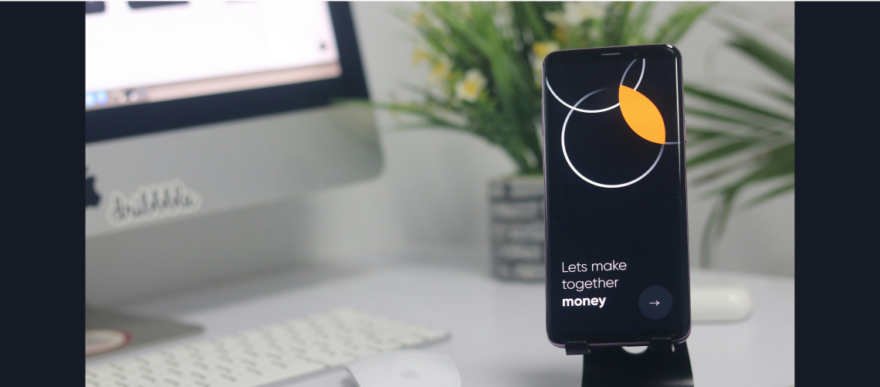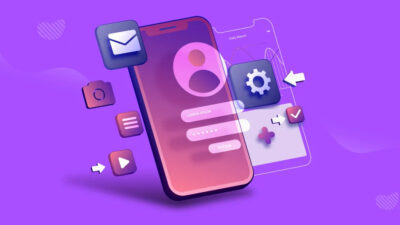Mobile App Design is a critical aspect of mobile development that focuses on a mobile application’s visual and interactive elements. It involves creating an intuitive and user-friendly interface that enhances the user experience.
Mobile App Design
This article digs into the unpredictable universe of versatile application configuration, making sense of its significance, standards, process, and the different apparatuses and advancements utilized in its execution.
Mobile development turn of events, then again, is a wide term that includes the whole course of making a versatile application, from ideation to organization. It incorporates different stages like preparation, planning, advancement, testing, and upkeep. This article gives a far-reaching comprehension of versatile turn of events, its techniques, stages, and the difficulties in question.
Understanding Mobile App Design
Mobile App Design Configuration is a multidisciplinary field that consolidates components of both craftsmanship and science. Making an outwardly engaging connection point is likewise useful, instinctive, and responsive. The objective is to give a consistent and pleasant client experience, which is vital for the outcome of any versatile application.
The plan of a portable application isn’t just about style; it likewise includes figuring out the client’s necessities, inclinations, and conduct. It requires a profound comprehension of human brain science, ease of use standards, and the most recent plan patterns. The planning cycle includes different stages like examination, wireframing, prototyping, and client testing.
Principles of Mobile App Design
Mobile App Design is driven by several key principles, including clarity, simplicity, consistency, and user-centricity. To begin with, clarity ensures that the app’s functionality and navigation are intuitive and straightforward. Furthermore, simplicity focuses on removing unnecessary elements, allowing users to concentrate on the app’s core features. In addition, consistency involves maintaining uniform design patterns and styles across the interface, creating a cohesive user experience. Lastly, user-centricity emphasizes designing the app from the user’s perspective, taking their needs and preferences into account to deliver a seamless and engaging experience.
Other significant standards incorporate criticism, adaptability, and openness. Input is tied in with giving quick and clear reactions to the client’s activities. Adaptability permits the client to alter the application as per their requirements. Openness guarantees that the application is usable by individuals with various capacities and handicaps.
Mobile App Design Process
The mobile app design configuration process includes a few phases, each with its own arrangement of errands and expectations. The primary stage is research, where the creator accumulates data about the client’s necessities, the market patterns, and the opposition. This is trailed by ideation, where the planner produces different plan ideas and thoughts.
Understanding Mobile Development
Mobile development improvement is an intricate interaction that includes different stages, innovations, and strategies. About making a versatile application that is utilitarian, solid, and easy to use. The interaction incorporates arranging, planning, improvement, testing, and upkeep.
The arranging stage includes characterizing the application’s goals, ideal interest group, and key highlights. The planning stage includes making the application’s connection point and client experience. The improvement stage includes coding the application’s usefulness. The testing stage includes checking the application for bugs and convenience issues. The upkeep stage includes refreshing the application and fixing any issues that emerge after its delivery.
Mobile Development Methodologies
There are a few techniques utilized in versatile turn of events, each with its benefits and impediments. The most widely recognized philosophies incorporate Cascade, Spry, and DevOps. Cascade is a direct and successive methodology where each stage is finished before continuing to the following. Nimble is an iterative methodology where the advancement interaction is separated into little additions or runs. DevOps is a cooperative methodology that coordinates the turn of events and task groups to further develop productivity and accelerate the conveyance cycle.
Picking the right philosophy relies upon different factors like the task’s intricacy, timetable, spending plan, and the group’s ability. It is critical to pick a system that lines up with the venture’s goals and the group’s capacities.
Mobile Development Platforms
There are a few stages accessible for versatile turn of events, each with its arrangement of instruments, dialects, and systems. The most well-known stages are Android and iOS. Mobile development offers a variety of platforms, each equipped with unique tools, programming languages, and frameworks. Among the most widely used platforms are Android and iOS. Android, an open-source platform created by Google, supports programming languages like Java and Kotlin.
There are likewise cross-stage structures, for example, React Native and Flutter that allow developers to write code once and deploy it on multiple platforms. These frameworks provide a cost-effective and time-saving solution for developing multi-platform apps.
Challenges in Mobile App Design and Development
Planning and developing a mobile app isn’t without its difficulties. These incorporate making a natural and easy-to-understand interface, guaranteeing the application’s presentation and unwavering quality, and staying aware of the consistently changing innovation patterns and client assumptions.
Different difficulties incorporate managing the variety of cell phones, working frameworks, and screen sizes. Guaranteeing the application’s security and protection is likewise a central issue, particularly with the rising number of digital dangers. Moreover, testing the application on numerous gadgets and stages can be a tedious and asset-escalated task.
Overcoming the Challenges
Overcoming these difficulties requires a blend of abilities, devices, and methodologies. It includes embracing a client-driven plan approach, utilizing the most recent instruments and innovations, and following the prescribed procedures in portable turn of events.
It additionally includes ceaseless learning and improvement, as the field of portable application plan and advancement is continually developing. Remaining refreshed with the most recent patterns and advancements, going to studios and meetings, and gaining from the encounters of different planners and designers can significantly help in defeating these difficulties.




